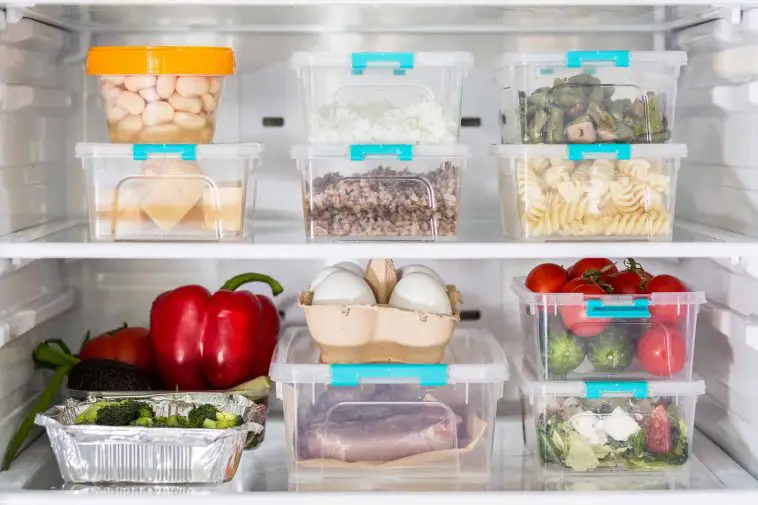Organizing your fridge is more than just a matter of cleanliness; it’s a crucial step towards adopting healthier eating habits. A well-arranged fridge can make all the difference in how we choose and consume our food. In this comprehensive guide, we’ll explore the best practices for fridge organization that can lead you to a healthier lifestyle.
Understanding the Basics
Introduction to Healthy Fridge Organization
The journey towards healthier eating begins not at the table, but in your fridge. A well-organized fridge is a cornerstone of healthy eating habits. It’s not just about cleanliness or space management; it’s about creating an environment that encourages nutritious choices and supports your health goals. By strategically organizing your fridge, you can make healthier food options more visible and accessible, reducing the temptation to reach for unhealthy snacks. This simple yet effective approach can significantly influence your daily eating choices, steering you towards a healthier lifestyle.
The Psychology Behind Fridge Arrangement and Eating Habits
The way we organize our fridge can profoundly impact our food choices. A fridge cluttered with unhealthy options often leads to impulsive, less nutritious food choices. Conversely, a fridge that prominently displays fruits, vegetables, and healthy snacks encourages better eating habits. This is rooted in the “out of sight, out of mind” principle. When healthy options are at the forefront, they become the go-to choice. This strategic arrangement not only makes it easier to find and prepare nutritious meals but also subtly influences our daily eating decisions, steering us towards healthier habits.For expert advice on healthy diets, visit Healthy Eating Guidelines.
Essential Steps for Fridge Organization
- Cleaning and Decluttering: Begin by emptying your fridge and giving it a thorough cleaning. This step is crucial for removing any lingering odors or spills that could contaminate your food. Decluttering also involves getting rid of expired products or items you no longer consume.
- Identifying and Removing Unhealthy Items: Take a critical look at what’s in your fridge. Remove items that don’t align with your health goals, such as sugary drinks, high-fat snacks, or processed foods. This step is about making conscious choices about what deserves space in your fridge.
- Stocking Up on Healthy Staples: Once your fridge is clean and decluttered, it’s time to restock with healthy staples. Focus on fresh produce, lean proteins, dairy, and whole grains. Consider your dietary preferences and nutritional needs when choosing these staples. The goal is to have a variety of healthy options readily available.
Creating Effective Zones in Your Fridge
Organizing your fridge into zones is a practical way to maintain order and ensure that healthy food is always within reach. Designate specific areas for different types of food – for instance, one shelf for dairy, another for fruits and vegetables, and a separate area for cooked meals and leftovers. The key is visibility and accessibility. Place healthier options at eye level and in clear containers. This zoning not only makes it easier to find what you’re looking for but also encourages you to make healthier choices simply because they’re more noticeable and accessible.
Labeling and Categorization
Advanced Strategies and Maintenance
Utilizing Containers and Bins for Organization
Choosing the right containers is essential for effective fridge organization. Opt for clear, airtight containers for perishables like fruits, vegetables, and leftovers. This not only keeps food fresh but also allows you to see what’s inside at a glance. Use stackable bins and baskets for items like yogurts, cheese, and small condiments to maximize space and maintain order. For bulk items or loose produce, larger bins can help keep things organized and easily accessible. Remember, the goal is to create a system where everything has its place, making it easier to maintain a healthy and organized fridge.For innovative storage solutions, check out Food Storage Solutions.
Storing Fruits and Vegetables for Optimal Freshness
Proper storage of fruits and vegetables is crucial for maintaining their freshness and nutritional value. Use the crisper drawers for leafy greens and herbs, as these areas maintain a more consistent humidity level. Separate fruits from vegetables, as many fruits emit ethylene gas that can cause vegetables to spoil faster. Consider using produce bags or containers that allow for some air circulation to prevent mold growth. Regularly check your produce for any signs of spoilage and remove them promptly to prevent them from affecting other items. This practice not only preserves your produce but also encourages you to consume them while they’re fresh.
Integrating Leftovers and Meal Preps
Efficiently organizing leftovers and meal preps can significantly streamline your eating habits. Allocate a specific area in your fridge for these items, preferably at eye level, so they’re the first thing you see. Use clear, labeled containers to store meal preps and leftovers, making it easy to identify and choose your meals. This not only saves time but also ensures that you’re eating what you’ve prepared, reducing food waste. Regularly rotate these items, placing the newest meals at the back and moving older ones to the front, to ensure they are consumed while still fresh.
Freezer Organization for Healthy Eating
A well-organized freezer is a valuable asset for healthy eating. Use bins and baskets to categorize items like frozen vegetables, fruits, whole grains, and lean proteins. Label these containers for easy identification. Freeze leftovers and pre-cooked meals in portion-sized containers or bags, which can be a lifesaver on busy days. Regularly defrost and clean your freezer to keep it efficient and free of ice buildup. By maintaining an organized freezer, you ensure that you always have healthy options on hand, making it easier to resist the temptation of less healthy, convenience foods.
Maintaining Your Fridge Organization
Regular maintenance is key to keeping your fridge organized and conducive to healthy eating. Set a schedule for weekly check-ups to remove any expired items and wipe down surfaces. Reorganize items that may have been misplaced and take inventory of what needs to be restocked. This is also an excellent time to plan your meals for the week, based on what you already have. Seasonal reorganization can also be beneficial, as your eating habits may change with the seasons. Consistent maintenance not only keeps your fridge clean but also reinforces your commitment to a healthier lifestyle.
Conclusion: Embracing a Healthier Lifestyle Through Organization
A well-organized fridge is more than just an aesthetic choice; it’s a fundamental part of embracing a healthier lifestyle. By implementing these organization strategies, you create an environment that supports your health goals, making it easier to make nutritious food choices. An organized fridge reduces waste, saves time, and alleviates the stress of meal preparation. It’s a simple yet effective step towards a healthier, more mindful way of eating. Remember, the state of your fridge is often a reflection of your eating habits, so invest the time in organizing it, and you’ll be investing in your health.
FAQs
- What are the best containers for fridge organization?
- Opt for clear, airtight containers of various sizes to suit different food types.
- How often should I clean and reorganize my fridge?
- It’s recommended to do a thorough clean-up every month and a quick check weekly.
- Can fridge organization really help in eating healthier?
- Absolutely! An organized fridge makes healthy food choices more visible and accessible.
By implementing these strategies, you’ll not only have a cleaner, more organized fridge but also a supportive environment for your healthy eating journey. Remember, the state of your fridge reflects the state of your diet. A little effort in organizing can lead to significant changes in your eating habits.






Comments
Loading…